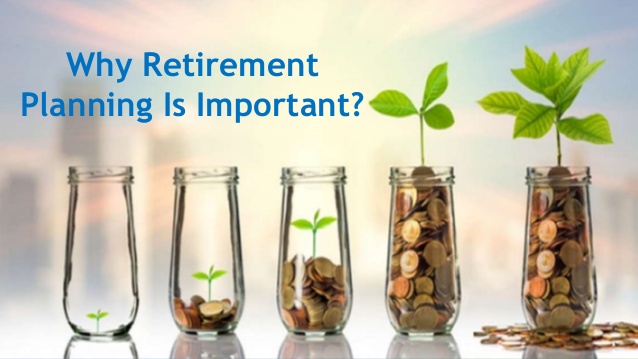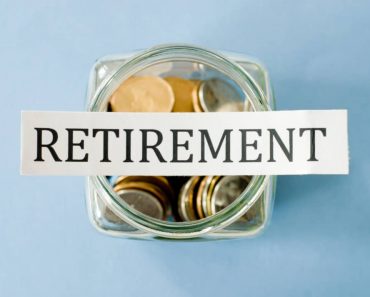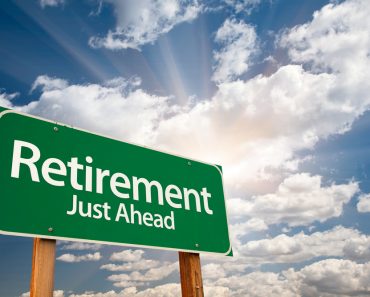
Retirement planning is a multifaceted process that may very well change with time. If you want the guarantee of a comfortable, secure—and fun—retirement road, you will need to build the financial bridge that will make it possible.
The dream of a pleasure-only, stress-free, fun-filled post-retirement life that makes you get out of bed each morning requires adequate planning for it to become reality. Planning for retirement begins with what your retirement goals are and how long it would take to reach these goals. Next, you consider the type of retirement accounts amongst the many available that can best help you raise the money needed to fund these goals.
Investing as you’re saving will facilitate more returns. Another factor to consider is taxes. If you’ve benefited from tax deductions for the savings in your retirement accounts, you will be heavily billed when you withdraw the savings. You could however still minimise the retirement tax hit while you save for the future.
The five steps outlined below are necessary for anyone, no matter their age, to build a good, solid retirement plan.
1. Understand Your Time Horizon
Your age now and the age at which you propose to retire are an essential foundation to your effective retirement strategy. The longer the time frame to your retirement, the higher the level of risk you can subject your portfolio to.
If you have more than 30 years until your planned retirement, you should consider the investment assets in riskier investments, such as stocks. Agreed, the market is volatile, however, stocks have produced better values over long periods compared to bonds and other securities. Note that you should have at least 10 years till retirement.
Your returns should also be relatively free of inflation. As Chris Hammond, a financial advisor, and founder of RetirementPlanningMadeEasy.com. says, “Inflation is like an acorn. It starts out small, but given enough time, can turn into a mighty oak tree… A seemingly small inflation rate of 3% will erode the value of your savings by 50% over approximately 24 years. Doesn’t seem like much each year, but given enough time, it has a huge impact”. Consistent saving of a few bucks here and there in your 20s may not seem much but the power of compounding interest makes it worth so much more over time.
Basically, the older you are, the more your portfolio should tend towards income and the preservation of capital. That is, more of your assets should be allocated in securities, which are less volatile and better in the short-run. At this point, inflation will be a much lesser concern than it was when you just entered the workforce.
Your retirement plan should have multiple components and should be rebalanced as your priorities change over time. A solid retirement plan must take into account various time horizons for different periods and the needs that come with them, in addition to cash flow needs, to determine the best allocation strategy.
2. Determine Realistic Retirement Spending Needs
Having realistic and not just ideal expectations about how you may spend post-retirement are important in helping you to determine the corresponding size of your retirement portfolio. Many people erroneously assume that their spending will reduce after retirement, and they sadly find such an assumption to be very false and unrealistic. Many things such as settling mortgage payments, unplanned medical expenses and various other unforeseen events may come up after retirement, so it’s necessary to take all these into account.
Living costs – especially healthcare – keeps rising every year. People now have longer lifespans and want to continue living a good lifestyle beyond their active working lives. Retirees need more income for a longer time, so they will need to save and invest accordingly.
Because retirees have more time on their hands, they may wish to travel, go sightseeing, shop, and engage in other expensive activities. Accurately estimating how much you will spend in retirement takes into account your longevity risk and could very well prevent understating and overstating your expenses, which can result in you outliving your portfolio and not living as well as you could respectively.
Your retirement plan should be updated regularly to keep track of your savings and to ensure that any decision change that may result in a significant outlay is factored into your retirement plan. Any change in details like retirement age, expenses and income needs to reflect in the retirement plan. Make sure that your retirement plan generally aligns with your investment goals.
3. Calculate After-Tax Rate of Investment Returns
The next step is calculating the after-tax, real rate of return for a portfolio feasibility assessment. That is, the feasibility of the portfolio producing the needed income. The required rate of return should be realistic here too. Expecting a before-tax rate above 10% is usually not feasible, even if it’s a long-term investment.
As you age nearer to retirement and as your increasingly low-risk retirement portfolios are largely composed of low-yielding fixed-income securities, the return threshold goes down. So the portfolio can be grown to safeguard a realistic rate of return – that’s another advantage of planning for retirement at an early age.
Investment returns are normally taxed with respect to the retirement account type that is used. Therefore, the actual rate of return must be calculated on an after-tax basis. However, it’s crucial that you determine your tax status when you begin to withdraw funds in the retirement-planning process.
4. Risk Aversion vs. Investment Objectives
Finding the right balance between risk aversion and return objectives is a vital step so you can smartly allocate investment portfolios for retirement planning. You may need to ask yourself just how much risk you are willing to take to meet your objectives. You may also want to consider if a part of your earnings will be invested in risk-free treasury bonds.
You need to talk extensively with your financial advisor and your family about the risks taken in your portfolio. It’s also advisable to not panic sell when the market declines, especially if you are investing money that won’t be touched for a very long time. In such scenarios, John R. Frye, co-founder of Crane Asset Management, LLC advises that it’s better to invest more money and buy accordingly.
5. Stay on Top of Estate Planning
One popular investment strategy for retirement is based on generating returns that meet annual inflation-adjusted living expenses while preserving portfolio value. The estate is then passed over to the deceased’s heirs to decide the best strategy for the person you will consult as a tax advisor.
The planning of states can differ over the lifespan of an individual. Matters such as attorney powers and wills are expected early on. A trust can be something that is an essential component of your financial strategy once you start a family.
Late in life, whether you would like the assets to be disbursed will be of paramount significance in terms of expenses and taxation. Working with a fee-only estate planning firm will help manage and sustain this aspect of your active investor’s system.
How Early can I Retire and what is the Lowest Amount I can Retire with?
The trick is not to look at your income but to look at your expenses. Once you can figure out what your expenses are, you can get a ballpark of what you need using the 4% rule. To simplify, aim for 25 times your expenses and that should give you a pretty good guess on how much money you want to be tucked away.
It is important to note that National Insurance can only cover part of your expenses in retirement. It’s best to wait until you earn as much as possible during your working years – if you want to enjoy the full benefits. If you have not worked for 35 years or more, you will have to wait until you are 67 to qualify for full pension age.
If you join Social Security at 62 and your average monthly benefit payment is $1,417, you can sign up and receive 70% of your full benefit until your “full retirement age” is 67. However, if you start paying National Insurance a month before full retirement age, your benefits will be cut by one, to 1%.
You can opt to retire early, which is another incentive to wait as you will get the full amount from the age of 70. You also need to think about how you will meet your financial obligations when you stop working. For example, if you plan to retire early, you might want the equivalent of 10 years of salary before you give up work.
Let’s face it, if you can save aggressively enough to switch to financial independence at the age of 40, you shouldn’t rely solely on National Insurance for your retirement income. There are concrete steps you can take if you want to work toward early retirement, be it through a 401 (k) plan, a retirement savings plan, or even a tax-free retirement account.
However, due to inflation over time, saving alone may not guarantee that comfortable retirement life. Building a fortune starts by saving, but you need your money to beat inflation so you can amass long-lasting wealth.





